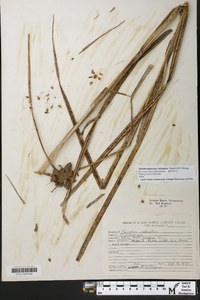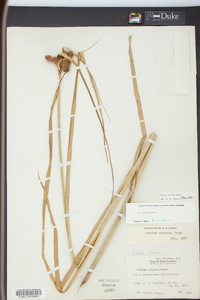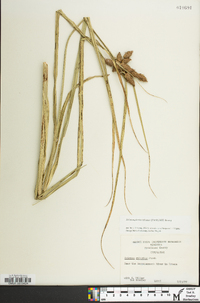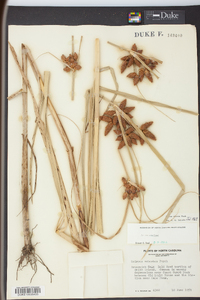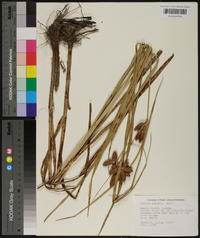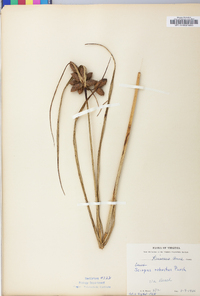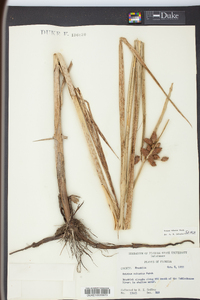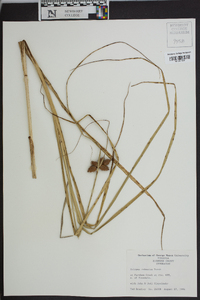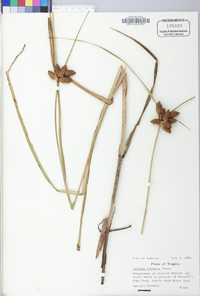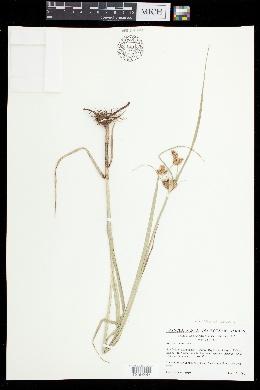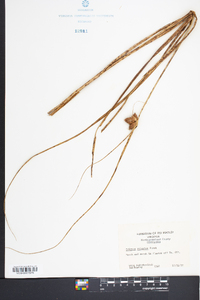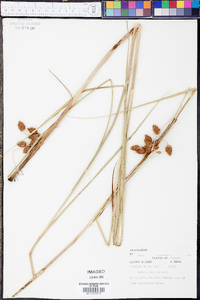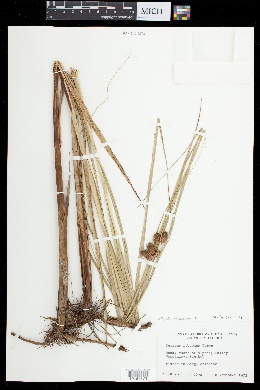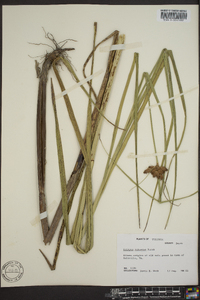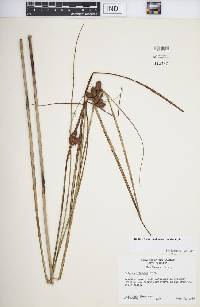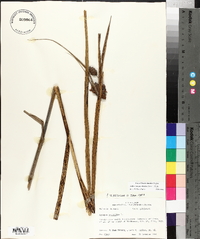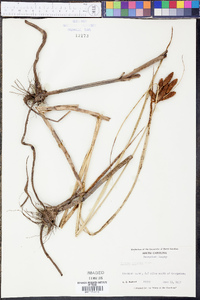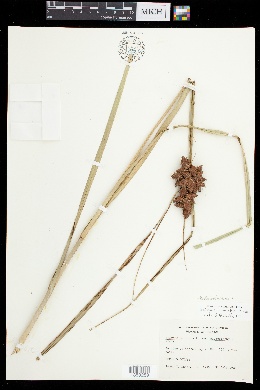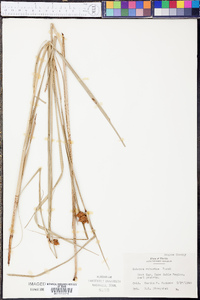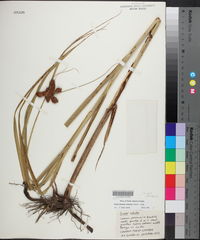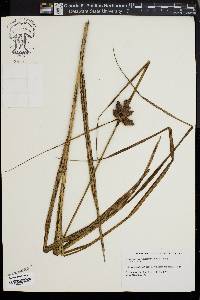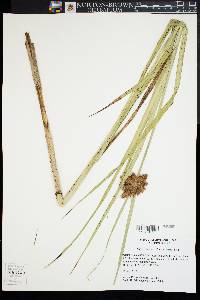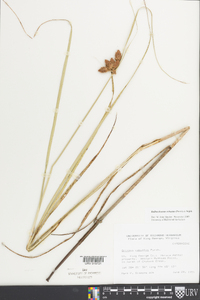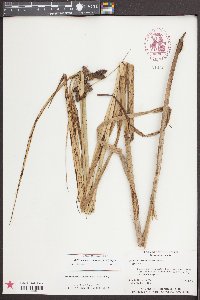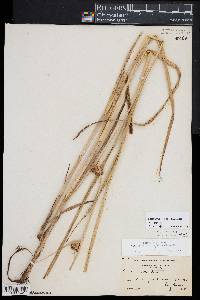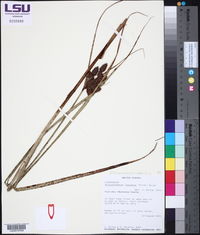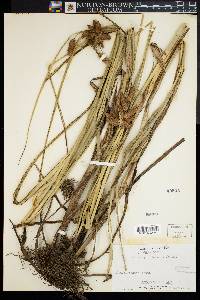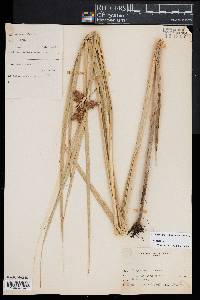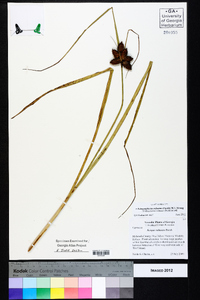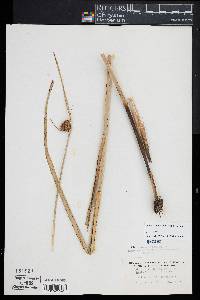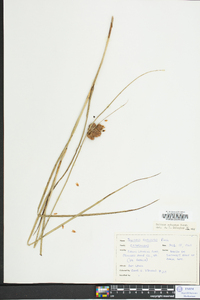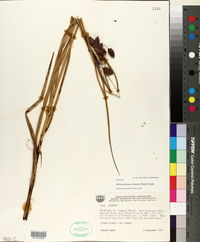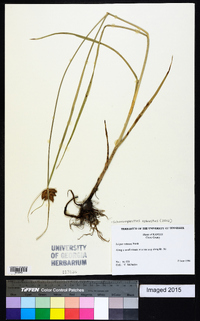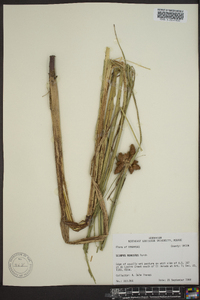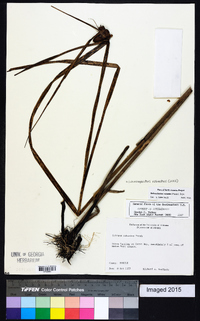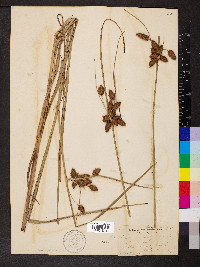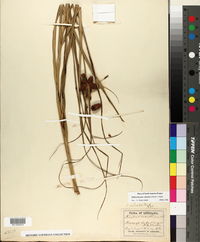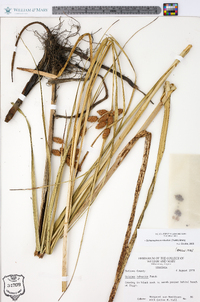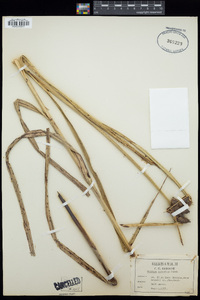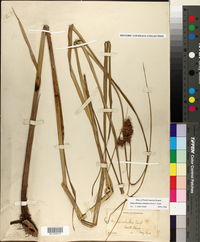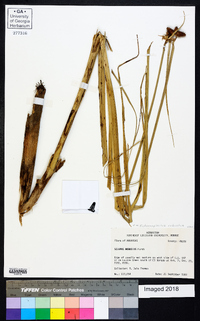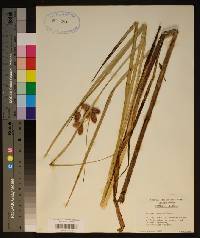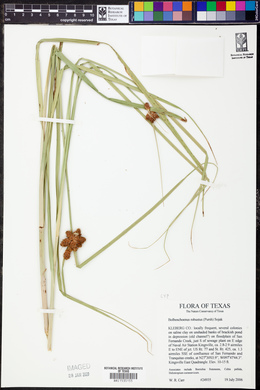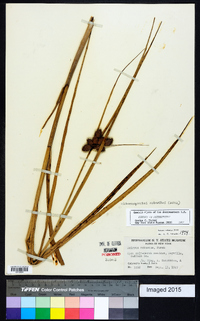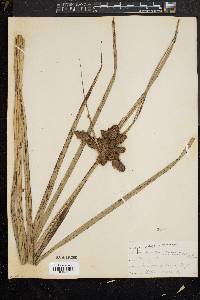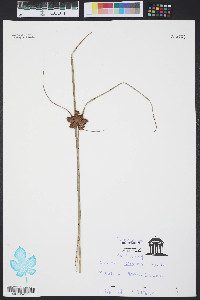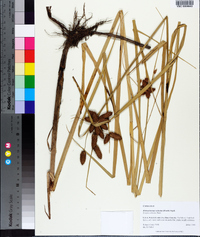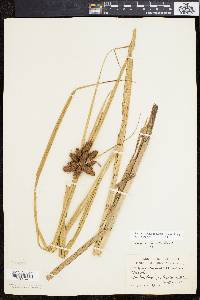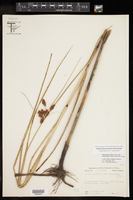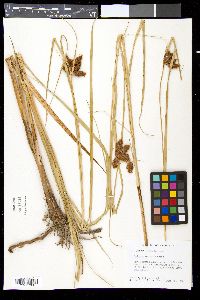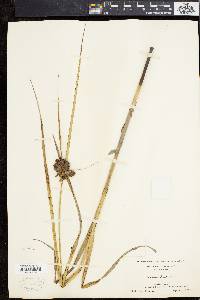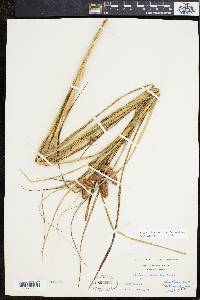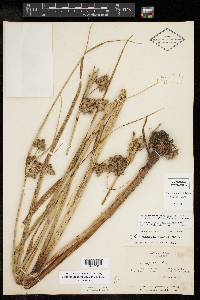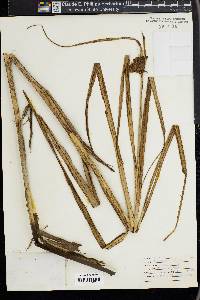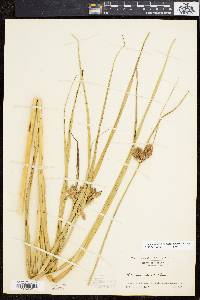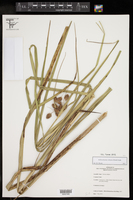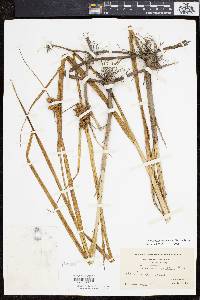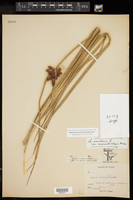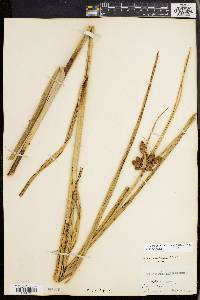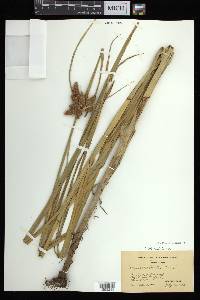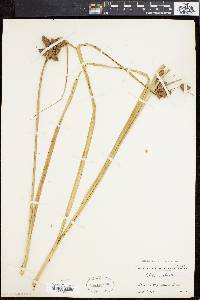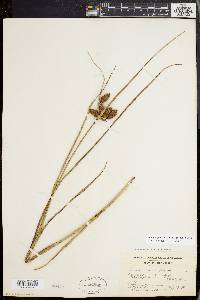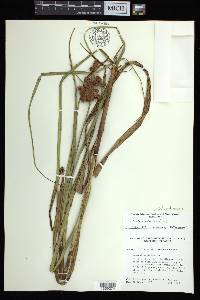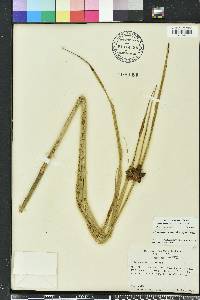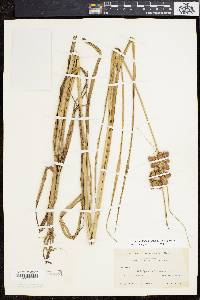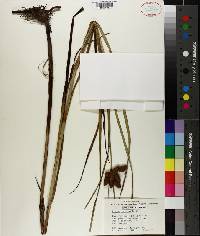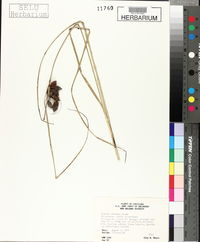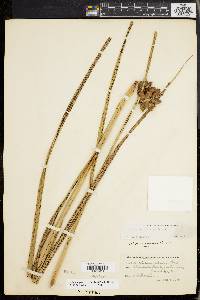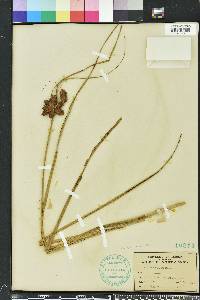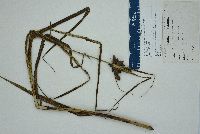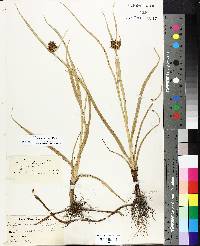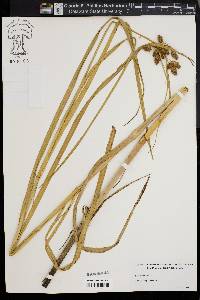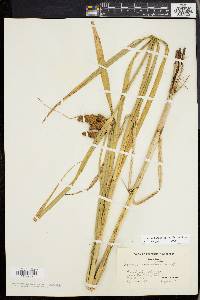Bolboschoenus robustus
|
|
|
|
Family: Cyperaceae
Seaside Wood Club-Rush
[Schoenoplectus robustus (Pursh) M.T.Strong, moreScirpus robustus Pursh, Scirpus robustus f. protrusus Fernald, Scirpus robustus var. compactus Burtt Davy] |
Culms 50-150 cm × 4-8 mm. Leaves: sheaths reaching beyond middle of culm, fronts usually convex, papery at mouth, veins reaching margin, or occasionally membranous with veins diverging proximal to apex leaving triangular, veinless area; widest blade 4-12 mm wide. Inflorescences simply branched with 1 or not more than 1/2 of spikelets solitary or in clusters of 2(-3) on 1-7 rays, rays not exceeding 7 cm; involucral bracts that surpass inflorescence 2-4, widest bract 2-7 mm wide. Spikelets (1-)5-25, broadly ovoid to rarely lanceoloid, 10-30 × 6-10 mm, base usually truncate; scales usually tightly imbricate, medium to dark orange-brown, lineolate-spotted at 15X, usually 6-9 × 3-4 mm, papery and nearly opaque, rarely membranous, apex 2-fid, 1 mm deep, awn very stout, 2-3 × 0.5 mm at base. Flowers: perianth bristles not persistent on shed achene or 1-2 weakly attached to shed achene, dark red-brown, 1/2 achene length; anthers brownish orange, 1.5-2.5 mm; styles (2-)3-fid. Achenes dark to medium brown, obovoid, compressed-trigonous with broadly rounded abaxial angle or sometimes biconvex, 2.7-3.5 × 1.8-2.8 mm, apex truncate to broadly rounded, beak 0.1-0.3 mm, surface glossy, exocarp cells evident at 10-20X; in achene cross section exocarp 2 times thicker than mesocarp and its cells greatly enlarged, 3 times or more deeper than wide; achene specific gravity much less than water. Fruiting spring-fall (south), summer (north). Brackish to saline coastal (very rarely inland) shores and marshes; 0(-100) m; Ala., Ark., Calif., Conn., Del., Fla., Ga., La., Maine, Md., Mass., Miss., N.H., N.J., N.Y., N.C., R.I., S.C., Tex., Va.; Mexico; South America. The only known noncoastal localities of Bolboschoenus robustus are in Arkansas, Louisiana, and southeastern Texas. On the Gulf Coast B. robustus sometimes has a triangular, membranous, veinless area in the mouth of the leaf sheath, which is typical of B. maritimus. The name Bolboschoenus robustus has been erroneously used for both B. maritimus and B. robustus in most literature on the flora of the Pacific coastal states. Putative hybrids of B. robustus with B. maritimus are common in zones of sympatry; they often have long-lanceolate spikelets. The type of Scirpus maritimus forma agonus Fernald is probably a B. maritimus × B. robustus hybrid. Bolboschoenus novae-angliae is probably derived from B. fluviatilis × B. robustus (J. Browning et al. 1995). Putative B. maritimus × B. robustus hybrids are known from New Brunswick and Nova Scotia, north of the known range of B. robustus (J. Browning et al. 1995).
Stout perennial with stout, tuber-bearing rhizomes; stems mostly 6-15 dm, sharply triquetrous; lf-sheath as in no. 17 [Scirpus fluviatilis (Torr.) A. Gray]; blade ca 1 cm wide; bracts 2-4, elongate; spikes mostly (3)5-20, ovoid to cylindric, all sessile or some clustered or solitary on rays to 4 cm, the infl appearing more compact than in no. 17; scales brown with thin margins, puberulent, the apex often fissured in age, the midvein prolonged into a recurved awn 2 mm; style bifid or trifid; achene glossy, dark brown to nearly black, 3-3.5 mm, broadly obovate, abruptly rounded-truncate to the minute beak-apiculus; 2n=106-110. Brackish or saline marshes along the coast; N.S. to Tex.; Calif. Fr July-Oct. (Bolboschoenus r.) Gleason, Henry A. & Cronquist, Arthur J. 1991. Manual of vascular plants of northeastern United States and adjacent Canada. lxxv + 910 pp. ©The New York Botanical Garden. All rights reserved. Used by permission. |

